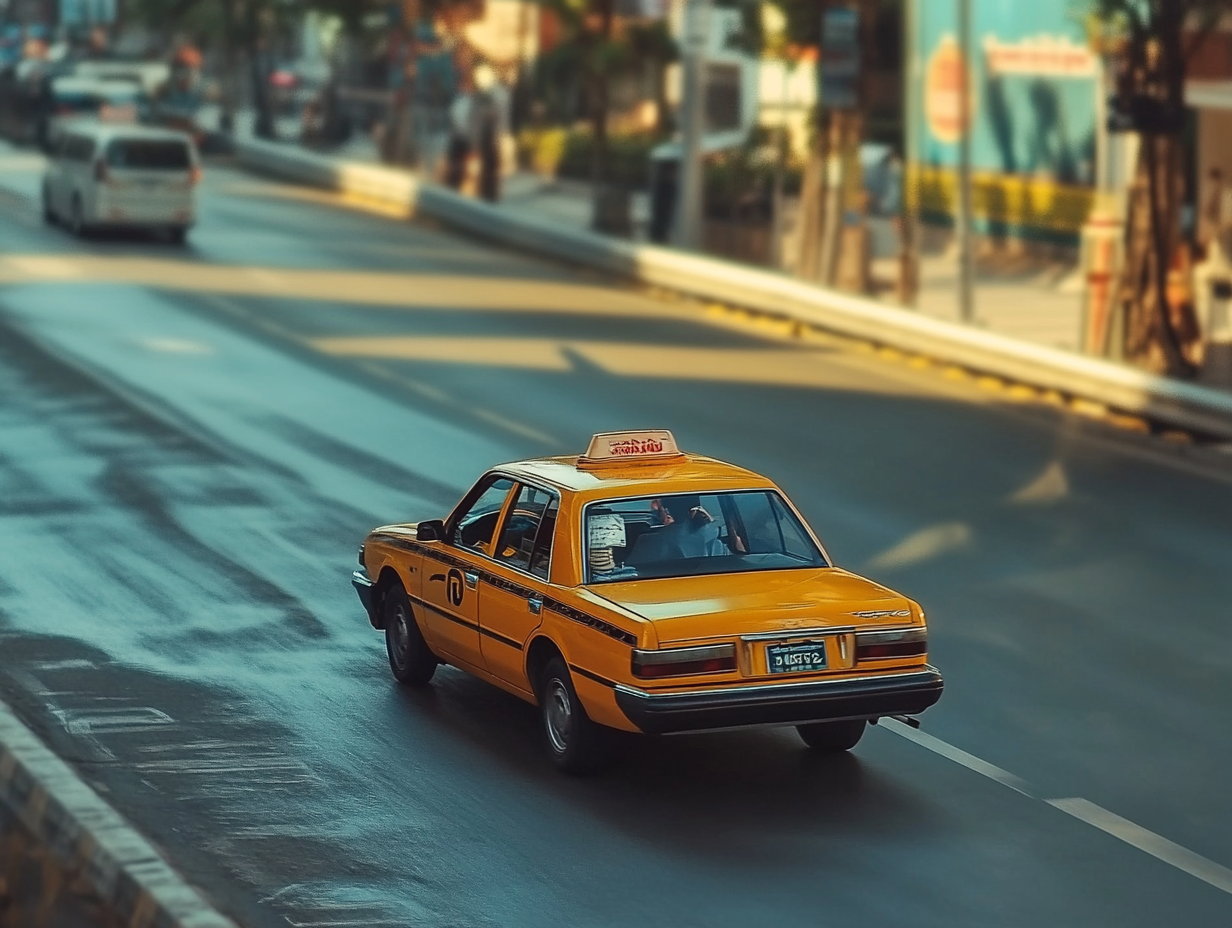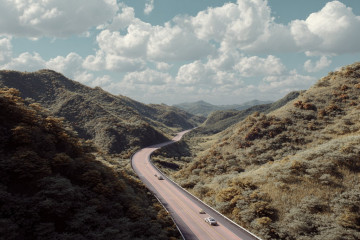Using the BTS, MRT, River Taxis, and Other Transportation Options
With a rush hour that seems to run from morning until evening, getting around Bangkok can test the strongest nerves. Colorful taxis perpetually clog the city’s major thoroughfares.
Fortunately, there are other options! The BTS (Skytrain), MRT (subway), and river taxi networks are extensive. Unless you’re staying near the Khao San Road area where trains don’t yet reach (but there is a ferry), avoid burning your trip time sitting in gridlocked traffic.
How to Ride the BTS Skytrain
Bangkok public transportation is excellent, and the Skytrain is an easy and efficient way to move between busy areas, particularly along Sukhumvit Road where traffic is frequently at a standstill. Looking down at all those brake lights as you speed by above feels good!
The heart of the Skytrain network is Siam Station, a massive interchange connecting the two BTS lines: Sukhumvit (light green on maps) and Silom (dark green on maps).
- Hours: Trains run every 5-10 minutes from approximately 5:30 a.m. until midnight; schedules vary about 30 minutes, depending on the station. Ticketing offices are open from 6 a.m. to midnight, but big public holidays can affect hours.
- Fares: Prices for single journeys are calculated by distance and range from 17-62 baht (between 50 cents and $1.70). Ticketing machines clearly display the cost from your current station. The average cost of a one-way trip is usually a dollar or less. A one-day pass for 24 hours of unlimited rides costs 150 baht (around $4.10).
- Ticketing: The BTS uses ticket cards available from machines (many only accept coins) or the ticketing window (if it’s open). Tickets aren’t checked on trains, but they are required to exit the turnstiles at your destination, so keep it handy! If you lose your ticket or exceed more than two hours on the “inside,” you’ll need to wait for an attendant and pay the maximum fare.
- Accessibility: Some BTS stations have escalators while others have a lot of stairs to climb. All stations have elevators excluding Saphan Taksin Station, the interchange for the river taxi system.
- Getting to and From the Airport: Phaya Thai Station on the Sukhumvit Line connects to the Airport Rail Link.
Details about individual station schedules and fares can be found on the official BTS website.
How to Ride the MRT Subway
Bangkok’s Metropolitan Rail Transit feels a bit slower than the Skytrain, but it’s every bit as useful—and you can pay by contactless card. Over 400,000 daily passengers use the subway for avoiding traffic on the surface. The MRT currently has two lines—the Blue Line (the busiest) and the Purple Line—and two monorail lines, Yellow and Purple.
The interchange for the Blue Line and Purple Line is Tao Poon Station. The BTS and MTR intersect, too.
- Hours: The MRT runs from approximately 6 a.m. until midnight. Trains run every 5-10 minutes, depending on time of day.
- Fares: Prices are based on distance covered and range from 14-42 baht (between 40 cents and $20). An average-length journey will cost around a dollar or less, or around 2 (71 baht) if you transfer between blue and purple.
- Ticketing: You can pay by contactless card on the MRT. Ticketing machines for the MRT accept small denominations of Thai baht and vend an RFID token that is tapped for entrance to the platforms. The token must be surrendered to exit. If you paid by contactless card, simply tap again to exit.
- Accessibility: All MRT stations have elevators.
- BTS Transfers: The MRT crosses the BTS Skytrain at Sala Daeng, Asok, and Mo Chit. You’ll need to get a new ticket.
- Getting to/from the Airport: Phetchaburi Station is connected to Makkasan Station on the Airport Rail Link to Suvarnabhumi Airport (BKK).
Fares and schedules can be seen on the official MRT website.
Using the Trains in Bangkok
Hua Lamphong Station located near Chinatown served as the hub for the long-haul surface trains and MRT until January 2023. The aging behemoth dates back to 1916 and now houses a small but charming Thai Railway museum. The new station, Krung Thep Aphiwat Central Terminal (aka Bang Sue Grand Station), located in Bang Sue, is Southeast Asia’s largest train station. Outside of Bangkok, Hua Lamphong Station is more commonly known as Krungthep (Bangkok) Station.
The expected restrictions—no smoking, eating, and drinking—apply for all trains in Bangkok. All stations are non-smoking. Some visitors are surprised to learn that photography and video are also prohibited.
On all public transportation options in Bangkok, you should be prepared to give up your seat to any monks and of course to pregnant women or anyone who may need a seat.
How to Ride Bangkok’s River Taxi Boats
Unless staying at one of the riverside hotels in Silom, many travelers don’t make use of the riverboat taxis while in Bangkok. The colored-flag system and quick, chaotic loading and unloading at piers (with whistle blowing) can be intimidating at first, but leveraging the mighty Chao Phraya River only makes sense for avoiding traffic. Plus, river taxis are an economical way to cover some distance in Bangkok. Fares for a scenic journey can be as low as 40 cents! An all-day pass costs just $4 (around 150 baht). Sathorn Pier is the stop nearest to a BTS Skytrain station (Saphan Taksin station on the Silom Line).
How to Ride Buses in Bangkok
Bangkok’s soot-choked buses are the slowest, most complicated option for getting around — tourists rarely bother. Pay the conductor on the bus, and have small change available.
Other Transit Options
Going by road is the least efficient way to get around in Bangkok. Regardless, sometimes you have to do it, particularly if staying in a neighborhood such as Banglamphu where public transportation options are limited.
Taxis in Bangkok
With a strong taxi “mafia” in place, you’ll need some luck on your side for a good taxi experience in Bangkok. Finding an honest driver is still possible, but patience is required.
All taxis have meters installed. Many drivers balk at using them because they prefer to keep inflated fares off the record. If a driver quotes you a price rather than switches on the meter, try another. Taxis will often queue behind one another for your business.
- Hail taxis on the move rather than using ones parked in tourist areas.
- Avoid the freelance drivers. Sharply dressed drivers with well-maintained cars are more likely to work for actual taxi companies than the local taxi mafia.
- After hailing a taxi, ensure the driver will use the meter.
- Once in a taxi, follow the route on Google Maps. Doing so can sometimes discourage drivers from taking the long way around because you demanded the meter.
- Tipping isn’t expected, but you can round up the fare for friendly service.
- Passengers are responsible for any tolls.
Note: Never get inside any vehicle in Bangkok without first agreeing to a set fare or use of the meter. Once on your way, you are obligated to pay whatever the driver asks.
Ridesharing Services in Bangkok
Ridesharing services cost slightly more than taxis, but you can avoid much of the hassle and upselling.
Grab works much in the same way as Uber, however, you can opt to pay with cash. This isn’t a bad idea in case you have a dispute with a rogue driver (unusual, but it happens). The fare can still be haggled or refused and won’t automatically be debited to your credit card.
Understand that rideshare drivers often get targeted and hassled by the local taxi mafia. They may want to pick you up in a place more discreet than the front door. Many drivers don’t put a sign on their car.
Tuk-Tuks in Bangkok
Taking a tuk-tuk ride is considered a quintessential Thailand experience. To enjoy, you’ll need to negotiate a fare and decline potential scams. Definitely don’t agree to stop at shops. Tuk-tuks are fun but no cheaper than taking metered taxis, and with no seat belts, they’re less safe.
If you plan to visit Chiang Mai on your trip, you’ll enjoy plenty of opportunities — tuk-tuks greatly outnumber taxis.
Renting a Vehicle
Just don’t. Bangkok’s public transportation is first-rate, fast, and cheap. Renting a car or motorbike to drive in Bangkok would be insane. Seriously, don’t do it. Wait for somewhere more relaxing and less dangerous to enjoy a scooter rental. According to the World Health Organization, Thailand has one of the highest traffic-related death rates in the world.
Tips for Getting Around Bangkok
- Keep your small change. Many ticketing machines for the BTS only accept coins. If you don’t have coins, you’ll have to wait in longer queues for the cashier or at ticketing machines that accept paper currency.
- Use new tickets for transfers. Unfortunately, a common ticketing system for the BTS Skytrain, MRT underground, and Airport Rail Link is still in the works. You’ll need to surrender the old ticket and buy a new one at interchanges when making transfers.
- Buy a card for long stays. If you’ll be in Bangkok long enough, consider purchasing rechargeable smart cards for the BTS and MRT. You can avoid the queues at ticketing machines. People over 60 years old get a 50 percent discount when adding credit to the MRT card.
- Avoid supporting bad practices. Supporting dishonest drivers harms locals through cultural mutation. Local residents sometimes have difficulty hailing taxis because drivers would rather wait for an overpaying tourist who doesn’t demand the meter.



